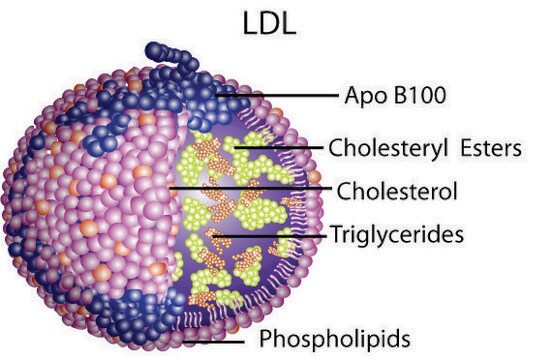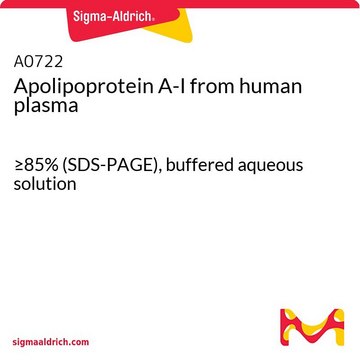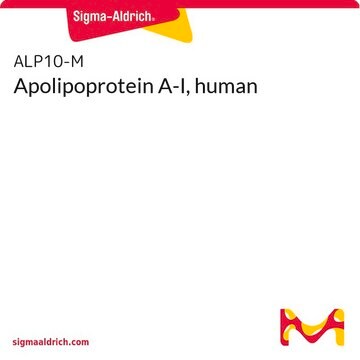L8039
Lipoprotein, high density from human plasma
≥95% (SDS-PAGE), solution
Synonyme(s) :
α-Lipoprotein, HDL, High density lipoprotein
About This Item
Produits recommandés
Source biologique
human plasma
Niveau de qualité
Pureté
≥95% (SDS-PAGE)
Forme
solution
Conditionnement
vial of 10 mg protein
Technique(s)
cell culture | mammalian: suitable
Groupe fonctionnel
ester
phospholipid
Conditions d'expédition
wet ice
Température de stockage
2-8°C
Informations sur le gène
human ... APOB(338) , APOC2(344) , APOE(348)
Vous recherchez des produits similaires ? Visite Guide de comparaison des produits
Actions biochimiques/physiologiques
HDL is used in cardiovascular research and the development of potential therapeutic approaches to cardiovascular risk management.
Forme physique
Autres remarques
Clause de non-responsabilité
Code de la classe de stockage
10 - Combustible liquids
Classe de danger pour l'eau (WGK)
WGK 2
Point d'éclair (°F)
Not applicable
Point d'éclair (°C)
Not applicable
Équipement de protection individuelle
Eyeshields, Gloves, multi-purpose combination respirator cartridge (US)
Certificats d'analyse (COA)
Recherchez un Certificats d'analyse (COA) en saisissant le numéro de lot du produit. Les numéros de lot figurent sur l'étiquette du produit après les mots "Lot" ou "Batch".
Déjà en possession de ce produit ?
Retrouvez la documentation relative aux produits que vous avez récemment achetés dans la Bibliothèque de documents.
Les clients ont également consulté
Articles
Since cholesterol is a water-insoluble molecule it must be packaged for transport within the plasma. The particles that package cholesterol, cholesteryl esters, and triglycerides for transport, are called lipoproteins.
The potential for the prevention and treatment of cardiovascular disease through increased dietary intake of omega-3 (w-3) fish oils is not a recent scientific discovery.
Notre équipe de scientifiques dispose d'une expérience dans tous les secteurs de la recherche, notamment en sciences de la vie, science des matériaux, synthèse chimique, chromatographie, analyse et dans de nombreux autres domaines..
Contacter notre Service technique






